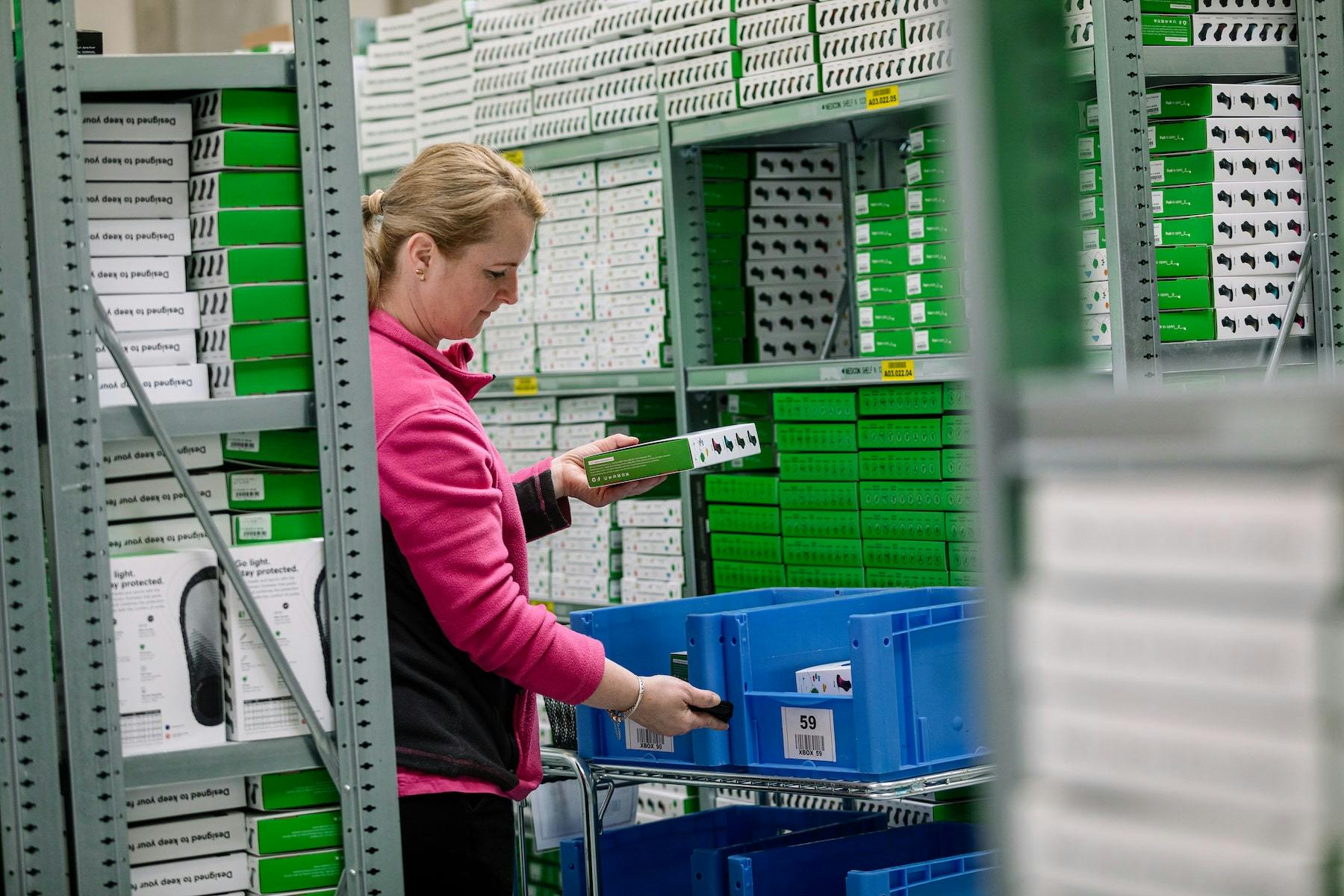How to increase order picking accuracy


In e-commerce, the quality of logistics is often as important as the product offering itself. One of the fundamental parameters that determines the ‘health’ of logistics is the accuracy of order fulfillment. This accuracy is closely related and defines the experience of end customers with your online store.
The quality of order fulfillment is influenced by a number of warehouse processes, each of which can represent a weak point or bottleneck that has a negative impact on the overall picture. Therefore, it is advisable to phase these processes, implement checking mechanisms for these phases, and gradually begin optimizing them so that you meet, ideally exceed, customer expectations.
In today’s article, we will gradually introduce the importance of order fulfillment accuracy, provide a benchmark for the ideal level, and recommend several tips that are effective in increasing order fulfillment accuracy.
What is order fulfillment accuracy
Order fulfillment accuracy refers to the ratio of correctly fulfilled orders to the total volume of orders. The most common errors made by warehouse staff include picking a wrong product, picking a wrong quantity of a product, or completely forgetting to pick a product. Such errors increase the risk of customers leaving to competitors and are both time and financially costly.
How to calculate order fulfillment accuracy
Given its importance, it’s advisable to continually monitor and improve the accuracy of order fulfillment. The formula for calculating order fulfillment accuracy is as follows:
Order fulfillment accuracy = (total number of orders correctly fulfilled / total number of orders fulfilled) * 100
Let’s illustrate this formula with a simple real-life example. Employees at an e-commerce store fulfilled 1,500 orders on a specific day, out of which 7 were fulfilled with errors. This resulted in an order fulfillment accuracy of 99.53%.
Order Fulfillment Accuracy = (1,493 / 1,500) * 100 = 99.53%
Benchmark: Order fulfillment accuracy
Due to the complexity of the order fulfillment process, achieving 100% accuracy is often impractical in practice, but the ideal rate should strive to be as close to this goal as possible.
According to external sources, it is a rule that successful brands achieve a 96 – 98% accuracy rate in fulfilling their orders. Therefore, it can be argued that if you fall within this range, further increases in accuracy will lead to even greater competitive advantage.
However, if you achieve accuracy below 96%, you are at a competitive disadvantage, and it is necessary to analyze the entire order fulfillment process and subsequently implement corrective measures.
A similar conclusion was reached during the reporting of the Logistics test, which we organized in collaboration with our partner Retino during the pre-Christmas peak season on 200+ medium and large online stores operating in the Czech market. During the test, we identified a 4% error rate in order fulfillment.
Accuracy of order picking vs. accuracy of order processing vs. accuracy of delivery
When mapping the accuracy between initially ordered and finally delivered goods into the hands of the customer, it is necessary to consider the process from three perspectives. The vast majority can be directly influenced by the online store in its warehouse; however, for others, the quality of services provided by third-party companies, usually carriers, often comes into play.
We prefer graphics before text, so we offer you a clear schema of individual parameters that influence the accuracy in the process of picking, processing, and delivery.

As is evident from the image, individual metrics are closely related. The accuracy of order fulfillment plays a crucial role in the overall picture and significantly contributes to the customer experience. For completeness of the scheme, it is necessary to further supplement the system integration of the involved systems, communication, and management. The quality of these three variables more or less speaks to all the areas depicted, directly influencing their accuracy.
Benefits of accurate order fulfillment
Increasing accuracy in order fulfillment can be supported by revolutionary changes that may vary significantly in cost. However, the sooner you start, the sooner you’ll reach the benefits associated with order fulfillment accuracy.
Lower costs
Incorrectly fulfilled orders result in future rework, particularly demanding time from customer care departments, which the employer pays for. The customer contacts the online store representative, who verifies evidence, systematically and physically duplicates the order (possibly adding a small gift as compensation), and then resends the shipment to the customer on behalf of the online store. Not to mention the costs associated with processing returned goods and potential recycling.
Higher productivity
Closely related to the previous point. By eliminating problems during the fulfillment process, warehouse staff can redirect their energy elsewhere in the supply chain.
More efficient inventory management
The higher the accuracy in fulfillment you achieve, the more precise the information about current inventory levels will be. And accurate inventory levels are a fundamental prerequisite for quality demand forecasting and ongoing replenishment.
Enhanced customer experience
Customers want what they ordered. If you repeatedly deliver different goods to them, they will start looking for alternative suppliers, resulting in decreased sales for you. If you want to retain hard-earned customers or encourage positive reviews, order fulfillment accuracy should be a priority for you.
How to optimize order picking accuracy
Increasing order picking accuracy doesn’t have to be too expensive or complicated. Start by internally establishing KPIs for order picking accuracy. Properly set and internally transparently communicated accuracy metrics will guide you in achieving it. When setting goals, draw on the know-how of your warehouse operators and strive to be maximally SMART.
The goal is to minimize the possibility of human error as much as possible, and to achieve the set KPI, reflect on the following pillars.
Warehouse organization
Chaos, illogical arrangement of shelves, or products always means a problem. Try to adapt your warehouse space to the needs of the warehouse staff, try to find optimal picking routes – ones that are statistically the shortest when picking products. Clearly label individual shelves and products, thus eliminating downtime due to searching for the right product.
Choosing the picking method
In logistical practice, there are several picking methods. The final choice depends on the volume of orders, the nature of the stored goods, space and financial possibilities, etc. For example, if you handle a high volume of orders, you can use batch or zone picking methods, where you can divide one order among multiple warehouse operators and thereby speed up the overall process. You can find an overview of basic picking methods in this article.
Technology and barcodes (EAN)
If you’re serious about your business, you can’t avoid investing in a warehouse management system (WMS). Unfortunately, this investment runs into hundreds of thousands to millions of Czech crowns, not to mention the subsequent maintenance and development of required system transactions. On the other hand, after implementation, this investment becomes your logistical center point, which financially pays off with increased order volumes. Inventory management, employee management, customer and supplier orders… all of this can largely be automated. Besides all mentioned, WMS is an ideal tool for identifying weaknesses.
An integral part is also the possibility of using barcode scanners. Just ensuring scanners is a more cost-effective solution compared to the long-term high rate of inaccuracies in order picking. Scanning products not only verifies the accuracy of picked products but also automatically updates stock levels in real-time.
For example, in our distribution center, each product is scanned repeatedly during its journey from receipt to dispatch during warehouse operations. This is why we have consistently maintained product picking accuracy above 99.95%.
Communication and feedback
Who better than a warehouse operator, who operates in the warehouse every day, can be a source of further optimization ideas. From personal experience, we know that feedback needs to be collected continuously, ideally immediately after identifying inefficiencies in the process. There’s a risk that over time, staff may become accustomed to deficiencies and learn to work around them, which paradoxically can lead to employee dissatisfaction. An important prerequisite for continuous feedback collection is also maintaining mutually professional and open communication.
Skladon as a partner for increasing accuracy in order fulfillment
Here at Skladon, it’s no different – we perceive the importance of accuracy in order fulfillment as key to the satisfaction of our clients and their end customers. That’s why we have SLAs (Service Level Agreements) established and contractually agreed upon with our clients, where one part commits us to maintaining the agreed level of accuracy in fulfillment. By utilizing our technologies and know-how, you automatically gain an advantage over your competitors when utilizing our service.
Warehouse management system
Our own IT team and open access to the warehouse management system (WMS) are our two competitive advantages, allowing us to tailor the fulfillment process to your needs while maintaining the required accuracy and efficiency.
During the fulfillment process, our warehouse operators are systematically guided to products in the warehouse along the optimal route, i.e., the shortest possible route while considering expiration dates. Scanning of products during picking and packing is standard practice, ensuring accuracy and immediate updating of inventory. This is why we consistently maintain a fulfillment accuracy rate above 99.95%.
“Since January 2020, we haven’t recorded any errors in order fulfillment. Due to the low percentage, we consider keeping reports time-inefficient,” says Simona Benkova, Process Manager Skinners.
MySkladon client application
Upon initiating our partnership, each of our clients is provided access to the MySkladon application, where they have access to complete information about their own logistics. In addition to reporting, the application serves as a tool for monitoring the established SLAs (as mentioned above). This allows them to check at any time whether we are meeting the promised fulfillment accuracy. In real-time, online, and 24/7.
Individual approach
Each of our clients also has their personal account manager available in case of any fulfillment errors. The complaint is verified through a 4K camera recording of the packaging and in the system’s history. In the event of an error, correction is carried out according to a procedure pre-approved with the client.
Before onboarding with a client, we also analyze the nature of the products being sold, based on which we allocate the most suitable warehouse operators to the client on a long-term basis. This increases their product knowledge, resulting in even higher accuracy and stable productivity. If an error occurs, we can immediately identify it and work on its resolution.
“Our decision was influenced by the personal approach, process maturity, and flexibility. For fulfillment, we chose Skladon, where we felt we wouldn’t be just a drop in the ocean,” says Lukas Hejtmanek, COO & Co-Founder Pepperfield.
